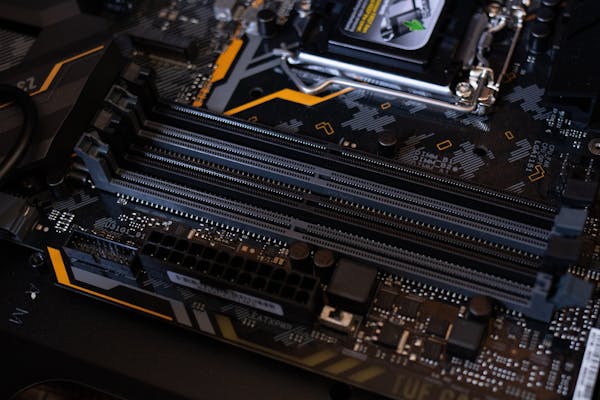Source article: click here (4G rotating proxy)

Understanding 4G Rotating Proxies
In today’s digital landscape, 4G rotating proxies have gained prominence for bypassing geo-restrictions.
An Overview of 4G Rotating Proxies
These proxies utilize cellular data connections to assign dynamic IP addresses to users. Unlike static proxies, they change IP addresses periodically, improving security.
How Do They Work?
Once initiated, users receive a 4G network IP. These IPs are switched periodically, hindering surveillance.
Advantages of Using 4G Rotating Proxies
- Improved Privacy: Dynamic IP rotation masks real IP addresses.
- Overcoming Location Barriers: Changing IPs enable viewing of geo-blocked sites.
- Minimized Blocking Risks: Frequent IP changes avoid detection systems.
Applications of 4G Rotating Proxies
- Data Extraction: Rotating IPs prevent scraping blocks.proxies facilitate automation.
- Competitor Analysis: Changing IPs monitor competitor strategies.
- o Consider}
Before selecting a provider, consider:
- Number of Available IPs: A larger pool enhances anonymity.
- Rotation Frequency: Determine if the service rotates per request.
- Location Options: Access to multiple regions supports diverse tasks.
Limitations to Be Aware Of
- Cost Implications: 4G proxies may be pricier compared to other types.
- Connection Stability: Mobile networks can be less stable.
- Ethical and Legal Considerations: Ensure usage avoids illicit activities.
Final Thoughts
Mobile 4G proxies provide dynamic IP solutions, making them invaluable in today’s digital age.
Understanding the Inner Workings of Mobile 4G Proxies
Amidst the landscape of digital security, 4G rotating proxies have gained prominence for bypassing geo-restrictions.
An Overview of 4G Rotating Proxies
4G rotating proxies utilize cellular data connections to rotate IP addresses to users. Unlike static proxies, they rotate IPs after set intervals, reducing detection risks.
Mechanism Behind 4G Rotating Proxies
When activated, users receive a 4G network IP. These IPs rotate based on time or requests, hindering surveillance.
Advantages of 4G Rotating Proxies
- Enhanced Anonymity: Dynamic IP rotation prevents tracking.
- Overcoming Location Barriers: Changing IPs facilitate unrestricted browsing.
- Minimized Blocking Risks: Frequent IP changes avoid detection systems.
Practical Implementations
- Information Gathering: Rotating IPs ensure continuous data collection.
- Multiple Account Handling: Dynamic proxies reduce account bans.
- Competitor Analysis: Changing IPs simulate diverse user locations.
Selecting a Reliable Provider
In choosing a proxy service, consider:
- Diversity of IP Addresses: A larger pool enhances anonymity.
- IP Change Intervals: Determine if the service rotates per request.
- Geographical Coverage: Access to multiple regions aids in geo-testing.
Considerations Before Use
- Budget Concerns: 4G proxies may be pricier compared to other types.
- Performance Issues: Mobile networks can be less stable.
- Regulatory Concerns: Ensure usage avoids illicit activities.
Final Thoughts
Mobile 4G proxies provide dynamic IP solutions, establishing their importance in today’s digital age.
The evolving internet ecosystem, staying anonymous and bypassing restrictions has become more important than ever. Scrapers, social media managers, and data analysts often utilize proxy technologies to change their IPs. Among these, 4G LTE rotating proxy servers have become the go-to solution.
But how do they compare to other options like residential proxies? Let’s explore the differences.
== What is a 4G Rotating Proxy?
A LTE rotating IP proxy is a proxy that relays requests through real mobile networks. These proxies rotate IPs at custom timeframes or upon request, emulating human behavior and eliminating the risk of bans or blocks.
== Main Proxy Types
Let’s summarize the key proxy types before comparing:
1. **Datacenter Proxies**
– Fast and affordable, but easily detectable.
2. **Residential Proxies**
– Use IPs assigned to real homes. More legit, but slower and costlier.
3. **4G Mobile Proxies**
– Use real SIMs on LTE networks. Best for scraping, bots, social media.
4. **SOCKS5 Proxies**
– Protocol-based, flexible, used for various apps, not just HTTP.
== Comparison Table
| Feature | 4G Rotating Proxies | Datacenter Proxies | Residential Proxies | SOCKS5 Proxies |
|————————|———————|———————|———————|—————-|
| IP Source | Mobile Network (SIM)| Data Centers | Home IPs | Varies |
| Rotation | Yes (Frequent) | Sometimes | Optional | Manual |
| Ban Resistance | High | Low | Medium | Depends |
| Speed | Medium | High | Low-Medium | High |
| Price | High | Low | Medium | Low-Medium |
| Target Use | Social, Ads, Bots | General Scraping | E-commerce, Research| General |
| Block Detection | Low | High | Medium | Medium |
== Technical Advantages of 4G Rotating Proxies
Why are 4G proxies so powerful?
– **Real Device Trust**: Websites trust mobile IPs more than others due to carrier NAT and wide user pools.
– **Shared Reputation**: IPs are shared across many users, making banning a single user risky.
– **Geo-targeted Mobile Carriers**: Rotate between networks in real U.S. cities or countries.
– **Dynamic Rotation**: Can rotate every few minutes or after each request.
– **Bypasses Captchas**: Mobile IPs are less likely to trigger captchas or challenge verifications.
== Where 4G Proxies Win
Let’s be real— if you’re running multiple Instagram accounts, nothing works better than a solid 4G proxy.
– Craigslist blocks data center IPs.
– Web scraping? You’ll face fewer issues.
– Ads management across banned zones? Done.
== Where They Fall Short
– **Cost**: They’re way more expensive.
– **Speed**: Slower than static datacenter options.
– **Limited Threads**: Some providers limit concurrent usage.
== SOCKS5 vs 4G: Protocol vs Behavior
If you need raw protocol-level control, SOCKS5 is your friend. But they don’t have native rotation.

| Attribute | 4G Proxy | SOCKS5 Proxy |
|———————|——————–|——————–|
| Protocol Type | HTTP/HTTPS | SOCKS5 (All apps) |
| Rotation | Yes | Manual |
| IP Trust Level | Very High | Medium |
| Use Cases | Social, Ads, Bots | Torrenting, Apps |
== Use Cases Side-by-Side
**4G Rotating Proxies:**
– Social Media Management
– Mobile Ad Verification
– SEO Scraping
– Sneaker Bots / E-com Testing
– Marketplace Automation
**Datacenter Proxies:**
– High-volume scraping (non-sensitive)
– Speed-demanding tasks
– Price-conscious campaigns
**Residential Proxies:**
– E-com price intelligence
– Research tools
– CAPTCHA-heavy targets
**SOCKS5 Proxies:**
– Application-level traffic routing
– Anonymity over torrents
– Bypassing firewalls
== How to Choose the Right One?
Each proxy has a time and place. Here’s how to choose:
– Need speed? Go datacenter.
– Need trust and stealth? Go 4G mobile.
– Need app-level routing? Go SOCKS5.
– Need wide IP pools without rotation? Try residential.
== Future of 4G Rotating Proxies
With AI detection systems growing smarter, only mobile proxies are keeping up. We’re seeing:
– 5G proxy rollouts in testing
– Smarter rotation algorithms
– Integration with automation platforms like Jarvee, NextPost, Puppeteer
== Final Verdict
If stealth matters, LTE proxies are your best bet. For any campaign that’s sensitive, black-hat, or gray area, it’s worth the investment.
== Spintax Conclusion
If you’re testing products or scraping competitors, investing in the right proxy is key to success.
They may feel expensive, but the benefits outweigh the cost.
https://www.fortinet.com/resources/cyberglossary/proxy-server
https://en.wikipedia.org/wiki/Proxy_server
https://support.microsoft.com/en-us/windows/use-a-proxy-server-in-windows-03096c53-0554-4ffe-b6ab-8b1deee8dae1
https://www.reddit.com/r/explainlikeimfive/comments/1dfgepb/eli5_what_is_a_proxy_server_and_why_would_i_as_an/
https://surfshark.com/blog/proxy-server












